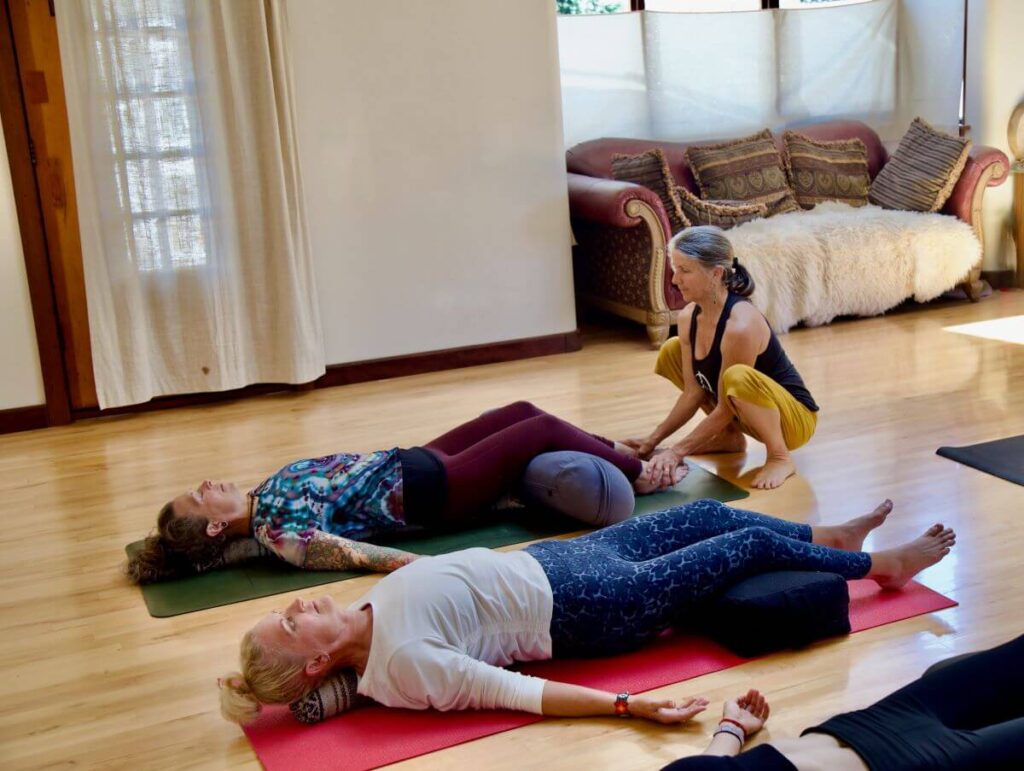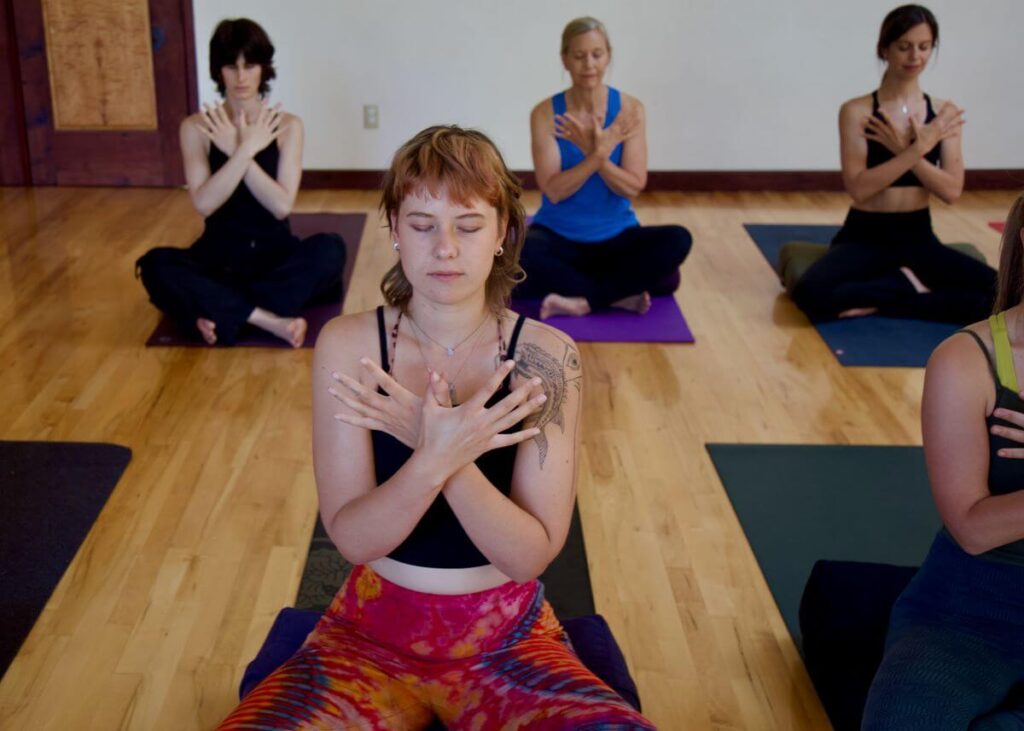In a world where cognitive decline and memory-related diseases are reaching epidemic proportions, the search for effective interventions has never been more urgent. While pharmaceutical approaches continue to be developed, a growing body of neuroscience research points to a practice that has existed for thousands of years: yoga. But not just any yoga—specifically, yoga practices designed to target brain health and memory maintenance.
The Growing Crisis of Cognitive Decline
The statistics are sobering. More than 5 million Americans are currently living with Alzheimer’s Disease (AD). Every 67 seconds, someone in the US develops AD. At this rate, of the 328 million people living in the US today, an estimated 45 million will develop Alzheimer’s. If you live to 85, your chances of developing AD are one in two—meaning if you don’t get it, your best friend likely will.
These numbers highlight why approaches like Memory Maintenance Yoga are not just beneficial but essential for our collective brain health.
How Yoga Changes Your Brain: The Scientific Evidence

Recent neuroscience research has revealed fascinating insights into how yoga practices physically alter and protect the brain. A comprehensive systematic review published in the journal Brain Plasticity examined 11 studies that used brain imaging techniques to assess changes in brain structure and function related to yoga practice [1].
Structural Changes
Regular yoga practitioners show increased gray matter volume in several brain regions critical for memory and cognitive function:
- Hippocampus: This seahorse-shaped structure is essential for memory formation and is one of the first regions affected by Alzheimer’s disease. Studies show yoga practice is associated with increased hippocampal volume [1,2].
- Prefrontal Cortex: This region, responsible for executive functions like planning, decision-making, and attention, shows greater volume and activity in long-term yoga practitioners [3].
- Default Mode Network (DMN): This network, which plays a crucial role in memory consolidation and self-referential processing, shows more efficient connectivity patterns in yoga practitioners [4].
Functional Improvements
Beyond structural changes, neuroscience shows that yoga creates functional improvements in brain activity:
- Increased GABA Levels: Yoga practices increase levels of gamma-aminobutyric acid (GABA), a neurotransmitter that helps regulate brain activity. Low GABA levels are associated with anxiety and cognitive impairment [5].
- Enhanced Neural Efficiency: Regular practitioners show more efficient neural recruitment patterns during cognitive tasks, suggesting their brains work more effectively with less effort [6].
- Improved Cerebral Blood Flow: Yoga postures, particularly inversions and forward bends, can enhance blood flow to the brain, delivering oxygen and nutrients essential for optimal brain function [7].
The Unique Power of Cross-Lateral Movements

One of the most powerful elements of Memory Maintenance Yoga is the intentional incorporation of cross-lateral movements—actions that cross the body’s midline and engage both hemispheres of the brain simultaneously.
Research from the field of educational kinesiology shows that cross-lateral movements strengthen the corpus callosum, the bridge between the left and right brain hemispheres [8]. This enhanced connectivity facilitates:
- Improved communication between analytical and creative thinking centers
- Better coordination between different brain regions
- Enhanced memory formation and retrieval
- Stronger neural pathways that can serve as “cognitive reserve” against age-related decline
Memory Maintenance Yoga systematically incorporates these movements, creating a practice that specifically targets brain integration and cognitive enhancement.
Stress Reduction: Protecting the Brain from Harmful Hormones
Chronic stress is neurotoxic—it literally damages brain cells, particularly in the hippocampus. The stress hormone cortisol, when chronically elevated, contributes to inflammation and oxidative stress that accelerate cognitive aging [9].
Yoga’s effectiveness in reducing stress is well-documented. A 2021 randomized controlled trial found that a regular yoga practice significantly reduced cortisol levels and inflammatory markers while improving memory performance in older adults at risk for cognitive decline [10].
Memory Maintenance Yoga incorporates specific breathing techniques (pranayama) and meditation practices that activate the parasympathetic nervous system—our “rest and digest” mode—counteracting the harmful effects of chronic stress on brain tissue.
Beyond Physical Practice: The Cognitive Components
Memory Maintenance Yoga goes beyond physical postures to incorporate cognitive challenges that further enhance brain function:
- Breath-Movement Coordination: Synchronizing breath with movement requires focused attention and creates new neural pathways.
- Visualization Practices: Guided imagery exercises activate the same neural networks involved in actual perception, strengthening these pathways.
- Mantra Repetition: The rhythmic repetition of sound patterns engages the brain’s language centers and attention networks.
- Sequencing Challenges: Learning and remembering yoga sequences activates working memory and procedural memory systems.
A 2023 UCLA Health study found that these combined approaches provided unique cognitive benefits to older women at risk of developing Alzheimer’s disease, with improvements in both immediate and delayed recall [11].
From Research to Practice: The Memory Maintenance Yoga Approach

The Memory Maintenance Yoga Teacher Training program translates these scientific findings into practical, accessible yoga classes designed specifically to support brain health. The program unites “the findings from new evidence-based research with the ancient wisdom of yoga to help people delay the onset of memory loss related diseases.”
This unique approach includes:
- Evidence-Based Sequencing: Classes structured around research-validated movement patterns that enhance neuroplasticity and cognitive function.
- Accessible Modifications: Adaptations that make these powerful practices available to practitioners of all ages and abilities, including those already experiencing mild cognitive impairment.
- Progressive Challenges: Thoughtfully designed cognitive and physical challenges that grow with students’ abilities, continually stimulating new neural growth.
- Integration of Multiple Modalities: Combining movement, breath, meditation, and cognitive exercises for comprehensive brain health support.
Becoming Part of the Solution
With dementia and Alzheimer’s occurring at epidemic proportions, yoga teachers have a unique opportunity to make a meaningful difference in their communities. By completing the Memory Maintenance Yoga Teacher Training, you gain the skills and knowledge to offer specialized classes that directly address this growing health crisis.
Upon completion of this 20-hour program, you’ll receive Yoga Alliance Continuing Education Credits and a “Memory Maintenance” Certification, allowing you to confidently offer these specialized classes to your community.
Conclusion: A Holistic Approach to Brain Health
The neuroscience is clear: yoga offers powerful, multifaceted support for brain health and memory maintenance. By combining physical postures, breathing techniques, meditation, and specific cognitive challenges, Memory Maintenance Yoga creates a comprehensive intervention that addresses multiple pathways of brain protection and enhancement.
As our population ages and memory-related diseases continue to rise, approaches that integrate ancient wisdom with modern science become increasingly valuable. Memory Maintenance Yoga represents this integration at its best—honoring traditional practices while incorporating cutting-edge neuroscience to create classes that truly make a difference in brain health.
Ready to be at the forefront of this important field? Learn more about the Memory Maintenance Yoga Teacher Training and join the movement to help communities thrive with better brain health, one mindful practice at a time.
References
- Gothe, N. P., Khan, I., Hayes, J., Erlenbach, E., & Damoiseaux, J. S. (2019). Yoga Effects on Brain Health: A Systematic Review of the Current Literature. Brain Plasticity, 5(1), 105–122.
- Villemure, C., Čeko, M., Cotton, V. A., & Bushnell, M. C. (2015). Neuroprotective effects of yoga practice: age-, experience-, and frequency-dependent plasticity. Frontiers in Human Neuroscience, 9, 281.
- Gothe, N. P., Kramer, A. F., & McAuley, E. (2017). The effects of an 8-week Hatha yoga intervention on executive function in older adults. The Journals of Gerontology: Series A, 72(9), 1172-1180.
- Gard, T., Taquet, M., Dixit, R., Hölzel, B. K., de Montjoye, Y. A., Brach, N., Salat, D. H., Dickerson, B. C., Gray, J. R., & Lazar, S. W. (2014). Fluid intelligence and brain functional organization in aging yoga and meditation practitioners. Frontiers in Aging Neuroscience, 6, 76.
- Streeter, C. C., Jensen, J. E., Perlmutter, R. M., Cabral, H. J., Tian, H., Terhune, D. B., Ciraulo, D. A., & Renshaw, P. F. (2007). Yoga Asana sessions increase brain GABA levels: a pilot study. The Journal of Alternative and Complementary Medicine, 13(4), 419-426.
- Froeliger, B., Garland, E. L., & McClernon, F. J. (2012). Yoga meditation practitioners exhibit greater gray matter volume and fewer reported cognitive failures: results of a preliminary voxel-based morphometric analysis. Evidence-Based Complementary and Alternative Medicine, 2012, 821307.
- Subramanya, P., & Telles, S. (2009). Effect of two yoga-based relaxation techniques on memory scores and state anxiety. BioPsychoSocial Medicine, 3, 8.
- Hannaford, C. (2005). Smart moves: Why learning is not all in your head. Great River Books.
- McEwen, B. S. (2017). Neurobiological and systemic effects of chronic stress. Chronic Stress, 1, 2470547017692328.
- Eyre, H. A., Siddarth, P., Acevedo, B., Van Dyk, K., Paholpak, P., Ercoli, L., St. Cyr, N., Yang, H., Khalsa, D. S., & Lavretsky, H. (2017). A randomized controlled trial of Kundalini yoga in mild cognitive impairment.